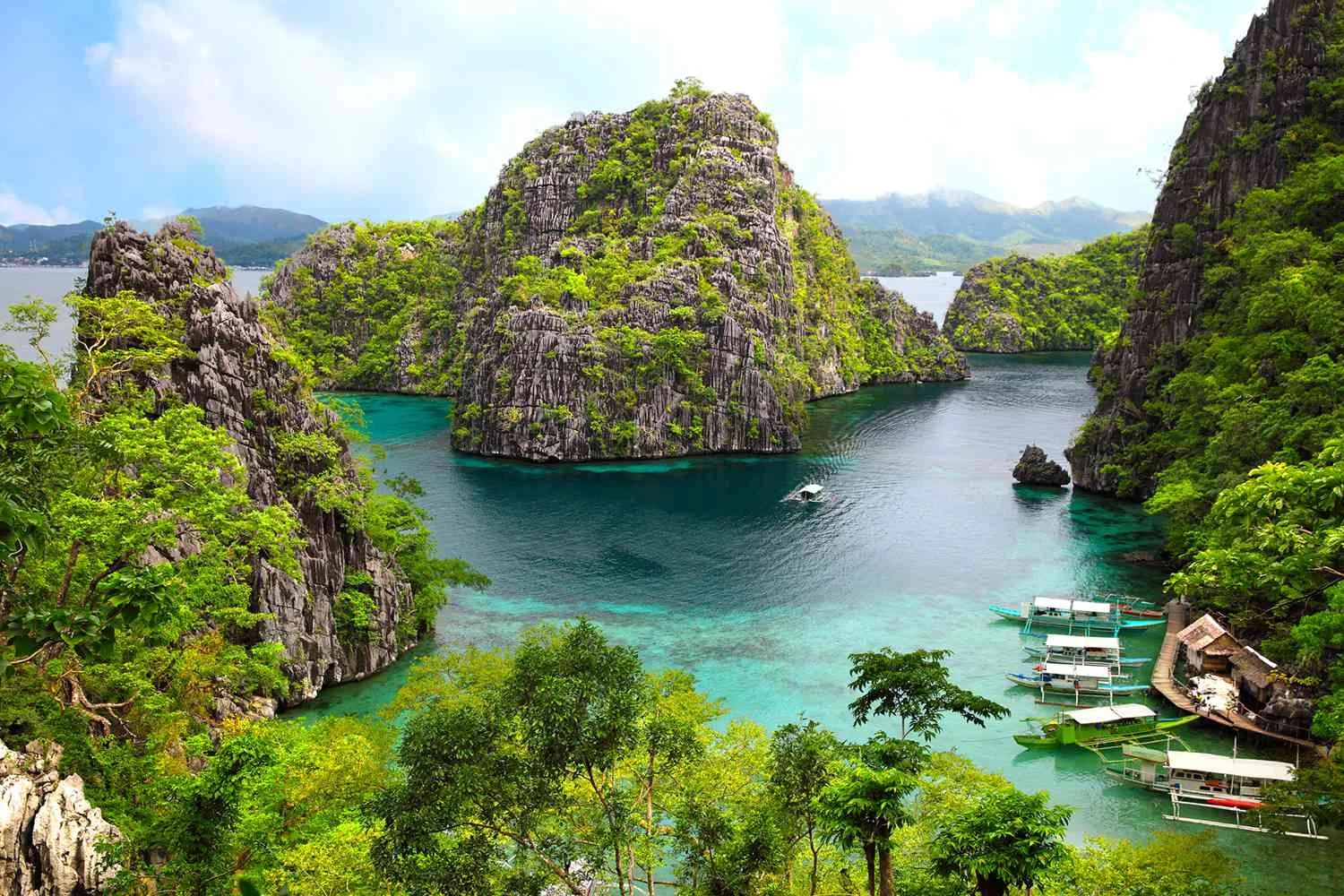1. Boracay Island: Famous for its powdery white sand beaches and vibrant nightlife, Boracay is a popular destination for water sports, relaxation, and lively beach parties.
2. Palawan: Home to stunning landscapes, Palawan offers the breathtaking Underground River, pristine beaches, and the picturesque Bacuit Archipelago, known for El Nido and Coron.
3. Chocolate Hills (Bohol): The unique geological formation of over 1,200 perfectly cone-shaped hills turns chocolate brown during the dry season, creating a surreal landscape.
4. Banaue Rice Terraces: These ancient terraces carved into the mountains of Ifugao showcase remarkable engineering and cultural heritage.
5. Mayon Volcano (Albay): Renowned for its near-perfect cone shape, Mayon Volcano is a scenic destination offering opportunities for hiking, nature appreciation, and cultural experiences.
The best time to visit the Philippines depends on the specific experiences you're seeking, as the country has distinct weather patterns. Here are two main seasons:
- Dry Season (November to April). This is generally considered the best time to visit the Philippines. The weather is dry and cooler, making it ideal for outdoor activities, beach vacations, and exploring various destinations. The peak tourist season is from December to February when temperatures are cooler. However, this is also the most crowded period.
- Wet Season (May to October). The wet season, also known as the typhoon season, brings heavy rainfall and the possibility of typhoons. The rain is more consistent from June to September.
Specific Considerations:
Festivals: If you're interested in cultural festivals, consider visiting during major festivals like Sinulog in Cebu (January) or Ati-Atihan in Kalibo (January).
Diving: If you're a diver, be aware that some dive sites may be temporarily closed during the typhoon season. The dry season is generally better for diving.
• Jeepneys: Jeepneys are a popular mode of public transportation, especially in urban areas. Fares are relatively low, ranging from PHP 8 to PHP 15 for short distances.
• Buses: Public buses and provincial buses operate between cities and provinces. Fares vary based on the distance traveled, but short city rides may cost around PHP 12 to PHP 20, while long-distance fares depend on the destination.
• Tricycles: Tricycles are a common means of transportation for short distances, especially in rural areas. Fares are usually around PHP 8 to PHP 20 per person.
• Taxis: Taxis are available in urban areas. Taxi fares start at around PHP 40 to PHP 70, with additional charges per kilometer. Prices may vary based on the location and time of day.
• Grab (Ride-Hailing): Grab is a popular ride-hailing service in the Philippines. Fares are calculated based on distance and demand. Initial fees start at around PHP 40, with additional charges per kilometer.
• Trains (LRT/MRT): Light Rail Transit (LRT) and Metro Rail Transit (MRT) operate in Metro Manila. Fares range from PHP 15 to PHP 30, depending on the distance traveled.
• Ferries and Boats: For inter-island travel, ferries and boats are common. Prices vary significantly based on the route and type of service, ranging from PHP 200 for short ferry rides to over PHP 1,000 for longer journeys.
• Domestic Flights: For travel between islands, domestic flights are available. Prices vary widely based on the destination and airline. Short flights may start at around PHP 1,500, while longer flights can be higher.
Free import
For all passengers over the age of 18:
• 400 cigarettes or 50 cigars or 250 grams of tobacco
• 2 bottles of alcohol with a volume of no more than 1 liter each
• Duty-free entry for special passengers: Filipinos who have lived abroad for more than 6 months can bring in used electronic or electrical appliances and personal belongings worth up to 10,000 pesos
• Contract workers: used personal belongings up to 10,000 pesos and used household appliances, no more than 1 of each type, up to 10,000 pesos
• Free withdrawal of up to 10,000 dollars or equivalent amount in foreign currency. Any bonds above this amount must be declared.
Forbidden Items
• Firearms and their parts, any kind of replicas, explosives, and ammunition.
• Printed subversive, obscene, and pornographic materials
• Drugs or substances that facilitate abortion
• Gambling machines and their products (slots or pinball machines, lottery totalizers - tickets, coin-operated video recorders)
• Any precious metals without specifying the actual purity of the fineness
• Low-quality falsified medicines or food products
• Illicit drugs and plants/seeds from which illicit drugs are made (coca, poppy, marijuana leaves) and smoking pipes and parts thereof.
• National Emergency Hotline: 911
• Bureau of Fire Protection: (02) 426-0219; (02) 426-3812; (02) 426-0246
• Philippine National Police: (2) 722-0650; +63917-847-5757





